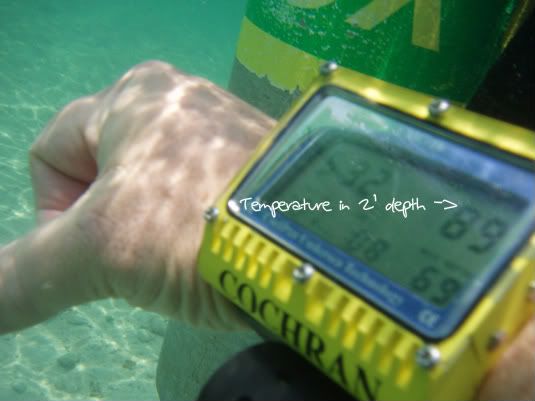I must say, your suggestion that most people can dive
happily for a hour in 82F water is hardly universal. My wife was literally shivering while snorkeling in 79F water (air temp at the surface was quite a bit warmer and there was little to no wind) after only 20 minutes. On our boat dives, at least half the divers were shivering after the second dive (all in at least 3mm suits), and several divers (including our DM) resorted to wearing
two wetsuits later in the week to combat being cold.
Several factors lead to divers being cold: (1) experience (more experienced divers tend to thrash around less in the water, thereby not warming up as much as some newer divers; experienced divers and photographers also tend to move around the reef slower, also resulting in less heating), (2) boat rides (while the surface temps might be warmer than the water temps, and there might not be much wind, traveling quickly on the water, coupled with adiabatic cooling from those who do not remove their wetsuits while topside, can result in much colder divers), (3) inherent "bioprene" (the less fat you have, the colder you're going to get), (4) repetitive dives (core temperature is going to drop across the dive day and across the dive vacation; the more dives you do, the colder you're going to get).
I wore a full 3mm for a week of diving in Bonaire (79-80F). I thought it was quite warm the first day. By the end of the week, I was shivering (and that's after adding a hooded vest).
I think the reality is, cold tolerance varies substantially across divers (due to various factors, some of which were highlighted above).
Personally, I can't imagine diving wet again in tropical waters in the low to mid-80sF. There's nothing that zaps the fun of diving for me like being cold. It simply isn't an acceptable way for me to have fun.
Of course, YMMV.
EDIT: All that said, a 3mm
full suit is (minimally) a good place to start for a new diver in waters of around this temperature. Having access to a (hooded) vest could be helpful. A full suit (IMO) is always preferable to a "shorty" simply for means of protection (I'm more concerned about jellies than accidental reef contact). If you're still cold, don't feel bad or feel that you have to endure it, you can always add neoprene or go dry.
In the pool training portion, you spent
a few minutes thrashing around underwater learning some skills, but
most of your time was spent
being wet and exposed to air while standing in the water or at the edge of the pool.
That's where you got cold.
If actually SCUBA diving in 85° water you should be able to go for an hour with no thermal protection- most people can. It is not uncommon for divers to get overheated while underwater. No joke.
Again- it is not uncommon to see surface water temps on the South side of Roatan hit 82°+ with regularity starting in April.
Owning that 3mil is a smart investment either way.
Just understand that when you are out of the water on your
surface interval you'll be in the tropical sun of Roatan.






